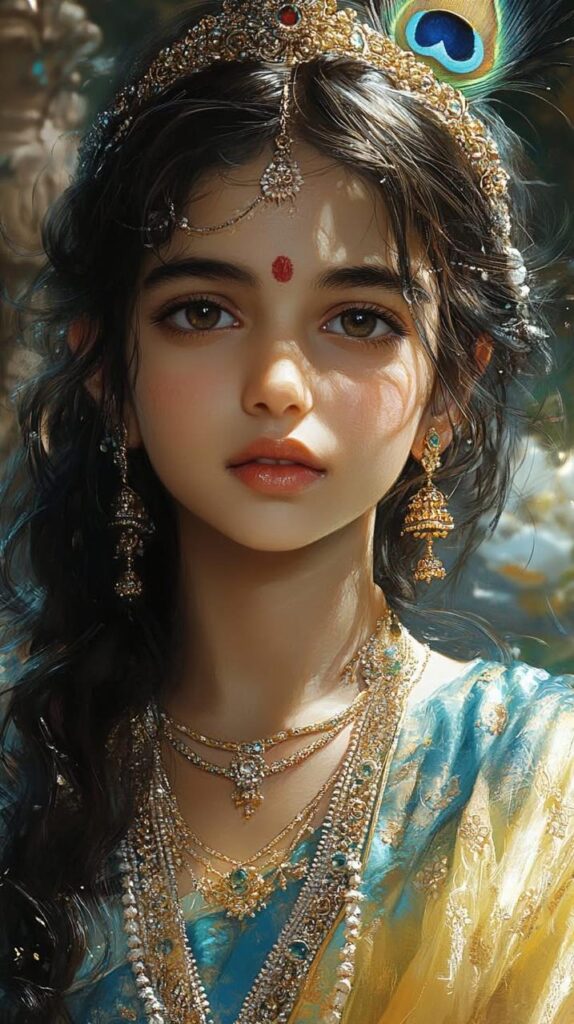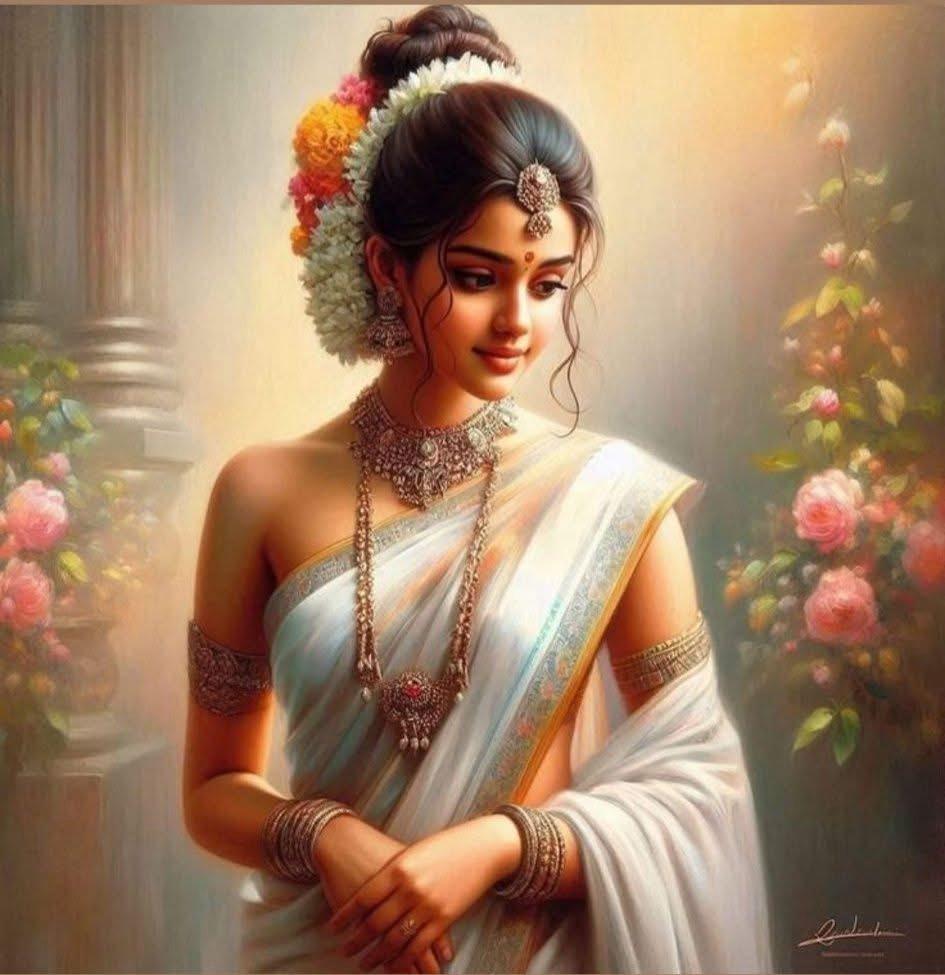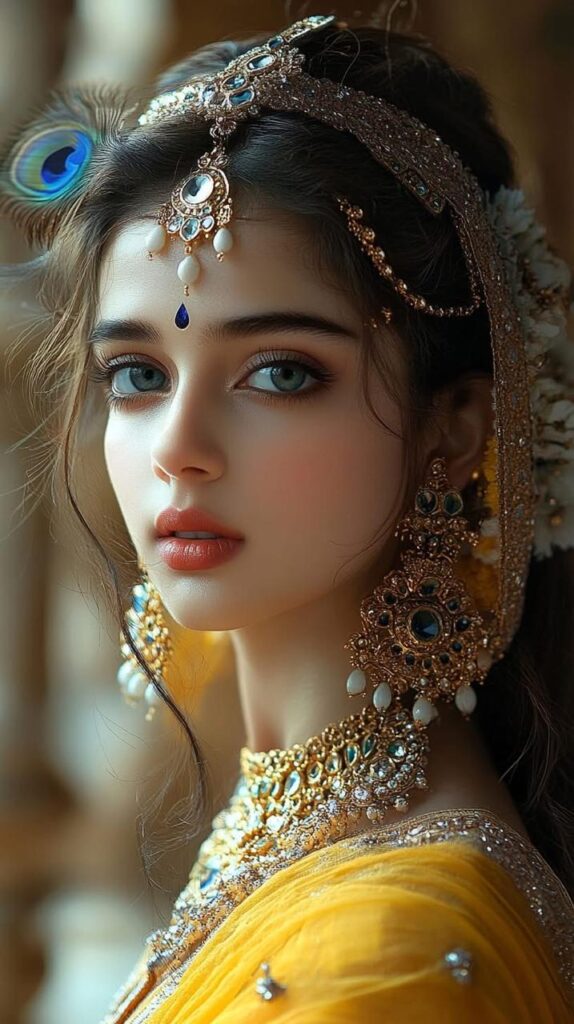Marriage in Mahakumbha Mela 2025
By Lokanath Mishra
In the picturesque village of Biswanath Mundia, Hari Babu, a retired headmaster, lived a serene life amidst his sprawling 15-acre farm. His farm was a marvel, with diverse crops, vegetables, and fruits flourishing under his care. A tranquil pond in the farm’s center added to its beauty, and Hari Babu’s cowshed was home to several gentle cows.

Hari Babu’s farm was not only a source of sustenance but also a means to earn a comfortable living. He sold his farm products, milk, and fish, earning a substantial income. However, Hari Babu’s true passion lay elsewhere. He had constructed a beautiful temple near his farmhouse, dedicated to the worship of Radha and Krishna.

Hari Babu’s wife was his partner in spirituality, and together they performed various rituals and practices in the temple. The temple was a hub of spiritual activity, with all major festivals and rituals celebrated with great fervor. Every evening, Hari Babu would recite the Gita and Bhagabata Purana in the temple, his voice filled with devotion.
The villagers adored Hari Babu, who spent his entire income on the temple and its celebrations. His generosity and devotion had created a sense of community and spirituality in the village.
Hari Babu’s son, Radhamohan, was a lecturer in a nearby Sanskrit college. A bachelor, Radhamohan was a devout follower of Prabhu Shri Jagannath and Prabhu Shri Krishna. He believed that both deities were one and the same. Every day, Radhamohan would recite the Bhagabata Purana, written by Atibadi Jagannath Dash, and the Gita.
Despite living in a nearby town, Radhamohan would often visit his parents and participate in the temple’s activities. The family’s shared devotion to Lord Krishna and their commitment to spiritual practices had created a sense of harmony and purpose in their lives.
As the sun set over the village, Hari Babu would sit in his temple, surrounded by the serene beauty of nature, and recite the sacred scriptures. His voice would carry across the fields, filling the hearts of all who listened with peace, love, and devotion.
After the unfortunate demise of Hari Babu and his wife during the Covid pandemic, Radhamohan resigned from his service and settled in the farmhouse. He dedicated himself to managing the farm and temple, just as his father had done before him. Radhamohan also opened a Sanskrit school, where he taught the ancient language to eager students.

The villagers were delighted with Radhamohan’s selfless efforts, and he became an integral part of the community.
In February 2025, Radhamohan traveled to Prayagraj to take a holy bath in the sangam during the Mahakumbha Mela. He decided to stay in an ashram from February 12 to March 15, where he taught the Gita and Bhagabat in English to foreign devotees. His teachings attracted many, and he soon gained popularity among the ashram’s residents.
One day, a young Japanese devotee fell ill, and Radhamohan came to her aid, using his knowledge of Ayurvedic medicine to nurse her back to health. The woman, whose name was Yumi, was deeply grateful and soon found herself drawn to Radhamohan’s kind and compassionate nature.
Yumi confessed her feelings to the ashram’s guru, who, sensing the divine connection between the two, encouraged Radhamohan to consider marrying Yumi. Initially hesitant, Radhamohan eventually agreed, and the marriage ceremony was held on the banks of the river Ganga.
The ashram’s residents, including the guru, rejoiced in the spiritual union of Radhamohan and Yumi. The atmosphere was filled with music, dance, and laughter as the couple embarked on their new journey together.
As the sun set over the sangam, Radhamohan and Yumi sat together, watching the stars twinkle to life. They knew that their marriage was not just a union of two individuals but a blending of two cultures and spiritual traditions.
In that moment, they felt the divine presence of Lord Krishna, smiling upon them, and blessing their union. And as they gazed into each other’s eyes, they knew that their love would flourish, nourished by the sacred waters of the Ganga.
Radhamohan and Yumi’s honeymoon in the ashram was a serene and spiritual experience. Surrounded by the tranquil atmosphere of the sangam, they felt their hearts merge into one, with Lord Shri Krishna’s divine presence guiding their union.
After taking a sacred bath (sahaj snan) on the day of Purnima, the couple returned to Radhamohan’s village, where they were greeted with warmth and enthusiasm. The villagers, who had grown fond of Radhamohan, were overjoyed to see him happy and settled with his new wife.
To celebrate their union, the villagers organized a grand wedding celebration, complete with traditional music, dance, and feasting. Radhamohan and Yumi were touched by the villagers’ kindness and generosity.
As they settled into their new life together, Yumi discovered her passion for teaching dance. She opened a dance school in the village, where she taught the local children various traditional and classical dance forms. The children adored Yumi, and she quickly became an integral part of the village community.

Radhamohan, meanwhile, continued to manage the farm and temple, while also teaching Sanskrit to the village children. Together, the couple lived a simple, yet fulfilling life, surrounded by nature, spirituality, and the warmth of their community.
As the days turned into weeks, and the weeks into months, Radhamohan and Yumi’s love continued to flourish. They would often sit together on the banks of the nearby river, watching the sunset, and feeling the divine presence of Lord Shri Krishna guiding their journey together.
